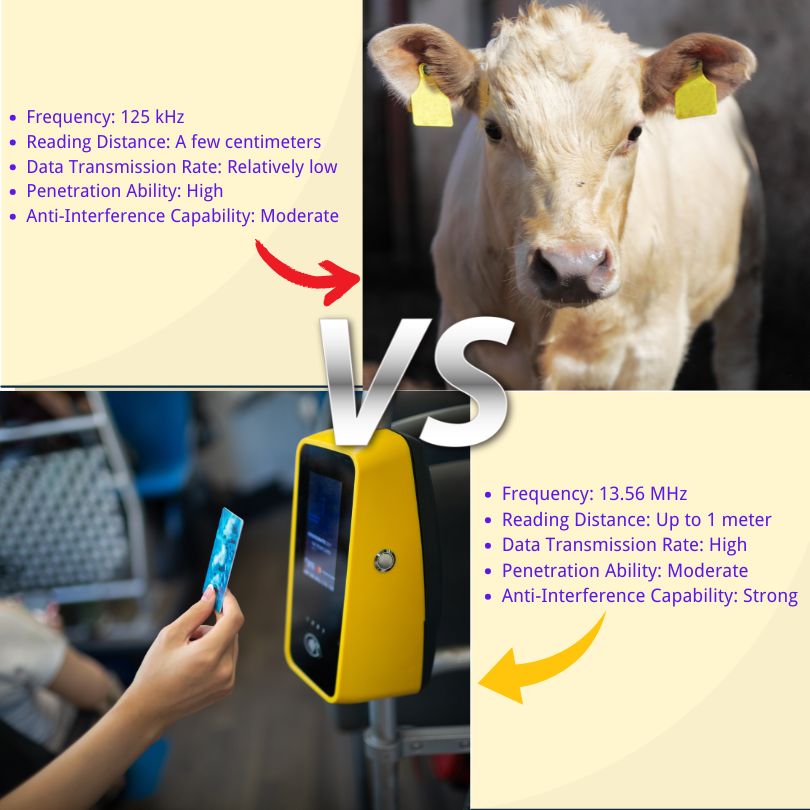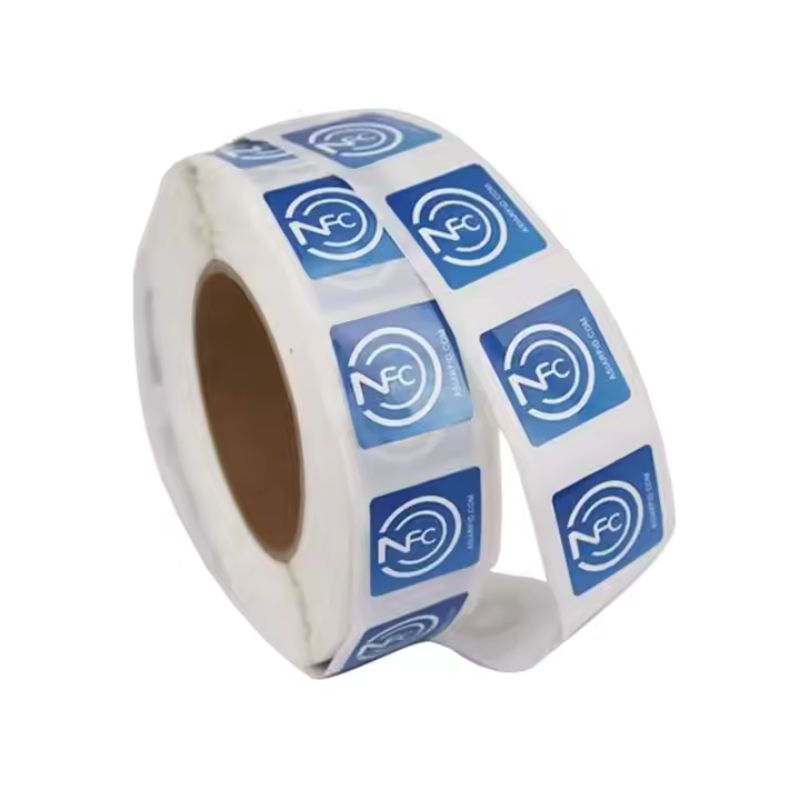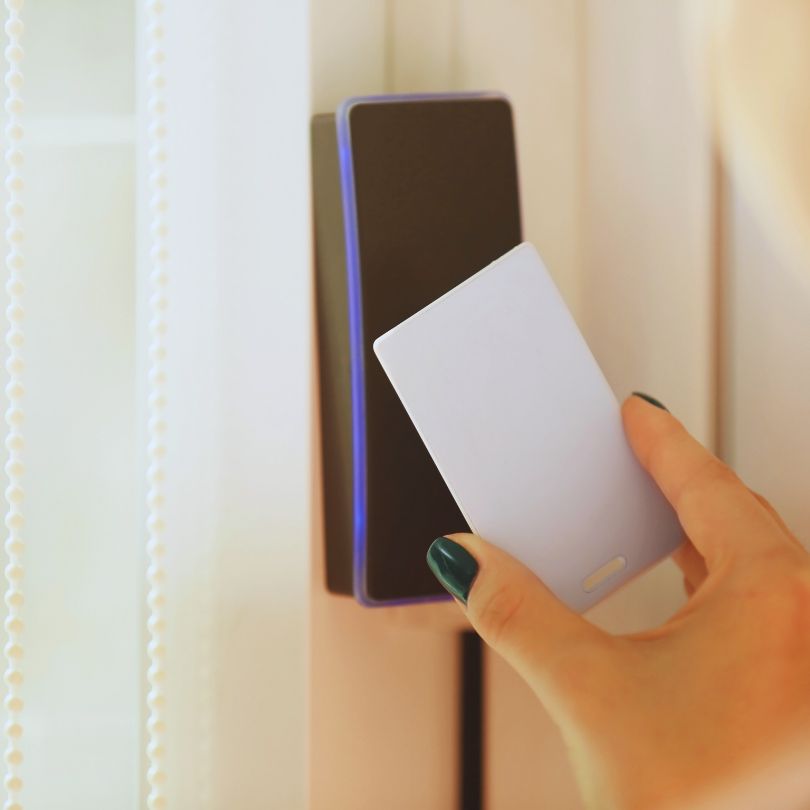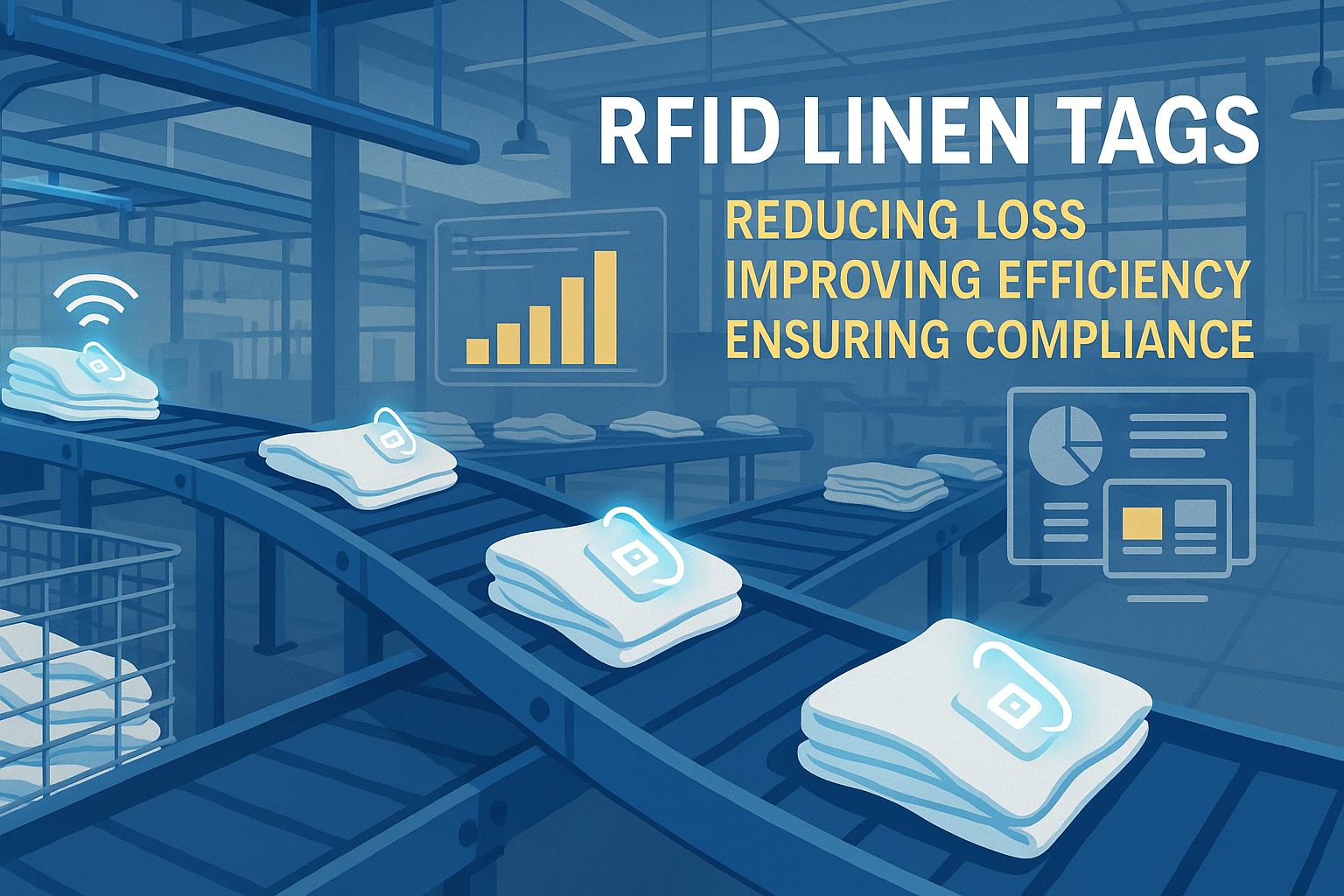
Comprendere le differenze tra i tag RFID da 13,56 MHz e 125 kHz
Sommario
Comprendere le differenze tra i tag RFID da 13,56 MHz e 125 kHz

Cosa significa realmente la frequenza RFID (LF vs HF)
I sistemi RFID utilizzano onde radio per comunicare tra loro. tag e lettori. La frequenza che utilizzano influisce sulla distanza di lettura, sulla velocità di trasmissione dei dati, sul comportamento in presenza di metalli o acqua e sul tipo di dati che possono memorizzare.
Ecco l'idea centrale:
Tag RFID a bassa frequenza (LF) = 125 kHz
- A corto raggio
- Velocità di trasmissione dati più lenta
- Ottime prestazioni in presenza di metalli o liquidi
- Semplice, robusto e conveniente
Alta frequenza (HF) = Tag RFID da 13,56 MHz - Raggio più lungo
- Velocità di trasmissione dati più elevata
- Sicurezza più avanzata
- Compatibile con NFC e smartphone
13,56 MHz contro 125 kHz
| Caratteristica | Tag RFID da 13,56 MHz | Tag RFID da 125 kHz |
|---|---|---|
| Frequenza | 13,56 MHz (HF) | 125 kHz (LF) |
| Intervallo di lettura | Fino a 1 metro | 2-10 cm |
| Velocità di trasferimento dati | Alto | Basso |
| Prestazioni vicino al metallo | Moderare | Forte |
| Sicurezza | Supporta la crittografia e l'autenticazione reciproca | Base, solitamente senza crittografia |
| Supporto NFC / Smartphone | SÌ | NO |
| Costo | Più alto | Inferiore |

Sicurezza: una sola frequenza è più sicura?
Tag RFID da 125 kHz sono spesso utilizzati nei sistemi più datati e in genere utilizzano ID univoci fissi senza crittografia. Ciò li rende facili da clonare con dispositivi disponibili in commercio. Sono adeguati per sistemi a basso rischio, ma non soddisfano i moderni standard di sicurezza.
Supporto per tag RFID a 13,56 MHz, in particolare schede MIFARE o DESFire:
- Crittografia
- Autenticazione reciproca
- Memoria di archiviazione sicura
- Applicazioni multiple su una singola scheda
Conclusione: - Utilizzate tag RFID a 125 kHz per esigenze di sicurezza ridotte (come chiavi di armadietti, orologi marcatempo).
- Scegliete 13,56 MHz per il controllo degli accessi, i pagamenti o qualsiasi sistema che memorizza dati personali.
Compatibilità NFC e smartphone
Se il tuo progetto prevede l'uso di telefoni, i tag RFID a 125 kHz non funzioneranno.
Solo Tag RFID da 13,56 MHz supportano la tecnologia NFC (Near Field Communication), utilizzata nei pagamenti mobili, nei check-in e nelle funzioni tap-to-pair.
La maggior parte degli smartphone è in grado di leggere e scrivere tag NFC utilizzando la frequenza 13,56 MHz, rendendo questa frequenza ideale per:
- Biglietti digitali
- Check-in agli eventi
- Poster intelligenti
- Carte fedeltà
- Identificazione mobile senza contatto
Se il supporto per smartphone è importante, 13,56 MHz è l'unica scelta possibile.
Casi d'uso reali per settore industriale
| Settore / Applicazione | Tag RFID da 125 kHz | Tag RFID da 13,56 MHz |
|---|---|---|
| Controllo degli accessi | Sistemi di accesso di base, porte tradizionali | Credenziali sicure, badge identificativi moderni |
| Trasporto pubblico / Biglietteria | Non supportato | Tessere di trasporto basate su MIFARE/NFC |
| Tracciamento degli animali | Ampiamente utilizzato grazie alla sua capacità di penetrazione nei tessuti | Raro |
| Automazione industriale | Affidabile in presenza di metalli/liquidi, uso intensivo | Meno comune in ambienti difficili |
| Assistenza sanitaria | Non ideale per il monitoraggio dei pazienti o dei farmaci | Migliore per l'identificazione sicura e l'etichettatura delle risorse |
| Biblioteche / Archivi | Raro | Popolare per il monitoraggio dei libri e i prestiti |
| Marketing / Eventi | Non applicabile | Poster intelligenti, pass per eventi NFC |
| Antifurto per veicoli | Tag RFID da 125 kHz integrati nelle chiavi/accensioni | Non utilizzato |

Come scegliere tra 13,56 MHz e 125 kHz per il tuo progetto
Utilizza questa lista di controllo per restringere il campo delle tue decisioni:
1. Livello di sicurezza
- Hai bisogno di crittografia o accesso sicuro? → Scegli 13,56 MHz
- Monitoraggio a basso rischio o identificazione di base? → 125 kHz potrebbero essere sufficienti.
2. Ambiente
- Interferenze elevate, metallo o liquidi nelle vicinanze? → 125 kHz funziona meglio
- Ufficio pulito o spazio interno? → Entrambi vanno bene; scegli in base alle caratteristiche.
3. Integrazione con smartphone
- Vuoi che gli utenti effettuino la scansione con i telefoni? → Solo 13,56 MHz supporta questa funzione.
4. Bilancio
- I tag a 125 kHz sono più economici all'acquisto
- Ma 13,56 MHz offre un valore più duraturo se avete bisogno di funzionalità o sicurezza.
Utilizzi ancora tag RFID a 125 kHz? Aggiornare o rimanere?
I tag RFID a 125 kHz sono ancora ampiamente utilizzati in:
- Sistemi di controllo degli accessi legacy
- Operazioni in fabbrica
- Marcatura del bestiame
- Sistemi antifurto automatici
Ma se stai gestendo: - Credenziali del personale
- Sistemi di pagamento
- Tessere identificative multiuso
- Integrazione NFC
... allora potrebbe essere il momento di cambiare.
Percorsi di aggiornamento:
- Installare lettori a doppia frequenza
- Emettere carte combinate (compatibili sia con 13,56 MHz che con 125 kHz)
- Implementazione graduale: supporto di entrambi i sistemi durante la migrazione
Domande frequenti su RFID a 13,56 MHz e 125 kHz
13,56 MHz è uguale a NFC?
Sì, NFC è un tipo di RFID a 13,56 MHz. La maggior parte degli smartphone lo supporta.
Un lettore può leggere entrambe le frequenze?
Di solito no. È necessario un lettore a doppia tecnologia per gestire entrambi.
Quale tag ha una portata maggiore?
13,56 MHz ha generalmente un raggio di lettura più lungo (fino a 1 metro). 125 kHz è limitato a pochi centimetri.
Quale dovrei usare per il controllo degli accessi?
Per i sistemi di accesso moderni e sicuri, si consiglia vivamente di utilizzare la frequenza 13,56 MHz.
Perché i tag RFID da 13,56 MHz e 125 kHz hanno distanze di lettura diverse?
La differenza nelle distanze di lettura è dovuta principalmente alla frequenza operativa. Le frequenze più alte come 13,56 MHz hanno una portata maggiore, mentre le frequenze più basse come 125 kHz sono ottimizzate per distanze più brevi.
Quale tag RFID è più adatto agli ambienti metallici o liquidi?
I tag RFID da 125 kHz sono più efficaci in ambienti con metalli o liquidi grazie alla loro superiore capacità di penetrazione.
Il costo dei tag RFID influisce sulla scelta?
Sì, i tag RFID da 125 kHz sono generalmente più convenienti, il che li rende un'opzione adatta per applicazioni attente al budget. Tuttavia, la scelta dovrebbe anche considerare i requisiti di prestazioni e gli ambienti applicativi.
Standard chiave e tipi di chip
13,56 MHz (HF)
- ISO/IEC 14443: Utilizzato nelle carte contactless (MIFARE, DESFire)
- ISO/IEC 15693: portata maggiore, utilizzato nelle biblioteche e nella logistica
- ISO 18000-3: Tracciabilità a livello di articolo
125 kHz (LF)
- Formati proprietari, spesso con ID fisso (ad esempio EM4100, HID Prox)
- Utilizzato principalmente nei sistemi più vecchi e nelle applicazioni di base
Conclusioni finali
Se ancora non sai quale strada prendere, ecco un riassunto:
Utilizza tag RFID a 125 kHz per:
- Condizioni difficili (metallo/liquido)
- Applicazioni a bassa sicurezza
- Implementazioni attente al budget
- Sistemi legacy
Utilizzare tag RFID a 13,56 MHz per:
- Supporto mobile/NFC
- Accesso e pagamento sicuri
- Carte multiuso
- Sistemi pronti per il futuro
Entrambi hanno la loro ragion d'essere, ma dovresti scegliere in base all'uso che ne farai, non solo al costo o all'abitudine.
Commenti
Prodotti caldi

Che cos'è la gestione dei rifiuti RFID
Immaginate una città in cui ogni bidone della spazzatura parla, non letteralmente, ma attraverso un minuscolo chip che comunica al sistema quando è pieno, quando viene svuotato e dove viene portato. Questo è ciò che fa oggi la gestione dei rifiuti RFID.

Cosa sono le guarnizioni per bulloni e le loro applicazioni? | Guida completa
Nel commercio globale e nella logistica, i sigilli a bullone svolgono un ruolo cruciale nel garantire la sicurezza e la conformità del carico. Questi piccoli ma potenti dispositivi sono progettati per bloccare container, rimorchi e porte di carico con un meccanismo antimanomissione.

Che cos'è un RFID Card Protector? Vantaggi, casi d'uso e guida all'acquisto
La tecnologia RFID (Radio Frequency Identification) è ovunque: nelle carte di credito, nei badge, nei pass di transito, nelle chiavi delle camere d'albergo e altro ancora. Offre velocità e comodità, ma apre anche la porta a un nuovo tipo di furto digitale chiamato "skimming". È qui che entra in gioco una protezione per carte RFID.

Braccialetti RFID per eventi: Guida all'acquisto di prodotti sfusi per gli organizzatori
I braccialetti RFID per eventi stanno diventando la soluzione ideale per gli organizzatori che hanno bisogno di ingressi più rapidi, prevenzione delle frodi e pagamenti senza contanti a concerti, festival e impianti sportivi. A differenza dei biglietti cartacei o dei codici QR, questi braccialetti intelligenti utilizzano chip incorporati per semplificare l'accesso, proteggere le transazioni e migliorare l'esperienza degli ospiti.

Come l'etichetta RFID sul parabrezza migliora il controllo degli accessi dei veicoli e i sistemi di pedaggio
Nel mondo frenetico di oggi, l'identificazione dei veicoli deve essere rapida, sicura e senza contatto. Un'etichetta RFID sul parabrezza offre proprio questo: un modo affidabile per gestire i pedaggi, i parcheggi e gli accessi senza fermare i veicoli.

I vantaggi delle etichette RFID per la biancheria nelle lavanderie commerciali
La gestione della lavanderia negli ospedali, negli hotel o nei grandi servizi di lavanderia è un lavoro impegnativo. Ogni giorno, migliaia di lenzuola, asciugamani e uniformi vengono lavati, smistati e rispediti fuori. Ma problemi come la perdita di biancheria, gli errori di smistamento e il conteggio manuale possono costare molto alle aziende. Ad esempio, gli hotel di medie dimensioni possono perdere oltre $200.000 all'anno a causa della biancheria smarrita.
È qui che entrano in gioco le etichette RFID per biancheria.
Etichette
BLOG CORRELATI

Che cos'è la gestione dei rifiuti RFID
Immaginate una città in cui ogni bidone della spazzatura parla, non letteralmente, ma attraverso un minuscolo chip che comunica al sistema quando è pieno, quando viene svuotato e dove viene portato. Questo è ciò che fa oggi la gestione dei rifiuti RFID.

Cosa sono le guarnizioni per bulloni e le loro applicazioni? | Guida completa
Nel commercio globale e nella logistica, i sigilli a bullone svolgono un ruolo cruciale nel garantire la sicurezza e la conformità del carico. Questi piccoli ma potenti dispositivi sono progettati per bloccare container, rimorchi e porte di carico con un meccanismo antimanomissione.

Che cos'è un RFID Card Protector? Vantaggi, casi d'uso e guida all'acquisto
La tecnologia RFID (Radio Frequency Identification) è ovunque: nelle carte di credito, nei badge, nei pass di transito, nelle chiavi delle camere d'albergo e altro ancora. Offre velocità e comodità, ma apre anche la porta a un nuovo tipo di furto digitale chiamato "skimming". È qui che entra in gioco una protezione per carte RFID.




